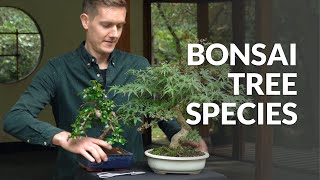Hemlock Bonsai Care guidelines
Tsugas like a sunny place as long as the temperatures don't rise too much. During the hottest summer days it can be advisable to keep them in semi-shade. Hemlocks tolerate frost, but should be protected from strong icy winter winds.
The hemlock needs to be watered when the rootball gets dry, but don't let it dry out completely. It prefers slightly acidic water with a pH value between 5.5 and 6.8. Better use rain water if your tap water is very calcareous. Continue reading about watering Bonsai trees.
Watering
Free lecture from the Beginners CourseFertilize the tree once a month with solid organic fertilizer or use a liquid fertilizer every week during the growing season.
Hard pruning is best done in late winter. Hemlocks grow slowly and branches which are supposed to thicken must be left to grow freely for at least a year. When the shoots have matured they can be cut back leaving only a few needles. To produce a compact ramification you can pinch new growth when it extends to provoke a second flush of growth and encourage back budding. Continue reading about pruning Bonsai trees.
Wiring can be done at any time of the year except spring, when the tender new foliage would likely be damaged. Guy wires are a good option to shape the branches.
Repot younger trees every two to three years in spring when growth starts, older specimen less often, using a standard soil mixture with a pH value between 5.5 and 6.8. The hemlock takes normal root pruning well. Continue reading about repotting Bonsai trees.
Hemlocks can be propagated from seed in spring or from semi-mature cuttings in summer.
Tsuga trees are hardly attacked by pests and diseases. Scale can occur in rare cases, then use a specific insecticide. For more detailed information on these techniques, check out our Bonsai tree care section.

Hemlock Bonsai (Tsuga)
General information about the Tsuga Bonsai tree
Tsuga trees are native to the temperate zones of North-America and East-Asia and grow in the Himalayas to north Burma, western Vietnam, China, Taiwan and Japan. They are elegant evergreen conifers with small needles, light green on new shoots in spring and dark green when they have matured. The bark on old trees is grey-brown, flaky and deeply furrowed. The attractive small egg-shaped cones can stay on the tree for a longer time after the seeds are released. For bonsai, the Canadian hemlock (Tsuga canadensis), Mountain hemlock (Tsuga mertensiana), West-American hemlock (Tsuga heterophylla) and Japanese hemlock (Tsuga diversifolia) are used most often, although Tsuga bonsai in general are quite rare. Sometimes good raw material for bonsai purposes can be found in gardens or tree nurseries. Hemlocks have good characteristics for bonsai and can be styled in all shapes except the broomstyle. If you need help identifying your tree, take a look at our Bonsai tree identification guide.





